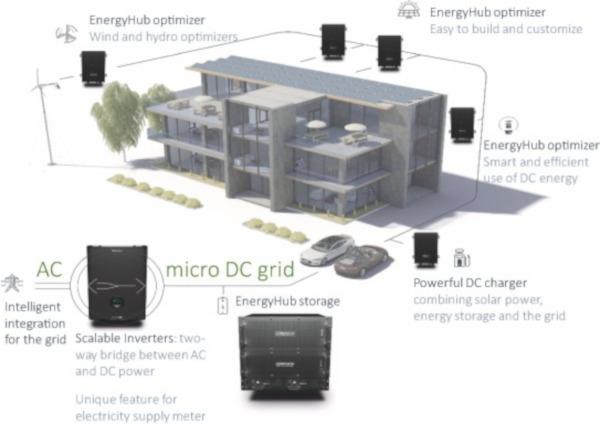Transforming a residential building cluster into electricity prosumers in Sweden: Optimal design of a coupled PV-heat pump-thermal storage-electric vehicle system

Smart grid is triggering the transformation of traditional electricity consumers into electricity prosumers. This paper reports a case study of transforming an existing residential cluster in Sweden into electricity prosumers.
The main energy concepts include:
- click-and-go photovoltaics (PV) panels for building integration,
- centralized exhaust air heat pump,
- thermal energy storage for storing excess PV electricity by using heat pump, and
- PV electricity sharing within the building cluster for thermal/electrical demand (including electric vehicles load) on a direct-current micro grid.
For the coupled PV-heat pump-thermal storage-electric vehicle system, a fitness function based on genetic algorithm is established to optimize the capacity and positions of PV modules at cluster level, with the purpose of maximizing the self-consumed electricity under a non-negative net present value during the economic lifetime. Different techno-economic key performance indicators, including the optimal PV capacity, self-sufficiency, self-consumption and levelized cost of electricity, are analysed under impacts of thermal storage integration, electric vehicle penetration and electricity sharing possibility.
Results indicate that the coupled system can effectively improve the district-level PV electricity self-consumption rate to about 77% in the baseline case. The research results reveal how electric vehicle penetrations, thermal storage, and energy sharing affect PV system sizing/positions and the performance indicators, and thus help promote the PV deployment. This study also demonstrates the feasibility for transferring the existing Swedish building clusters into smart electricity prosumers with higher self-consumption and energy efficiency and more intelligence, which benefits achieving the ‘32% share of renewable energy source’ target in EU by 2030.
- URL of the publication: https://www.sciencedirect.com/science/article/pii/S030626191931551X
Additional documents
News published on Build Up Publications
Consult the source



